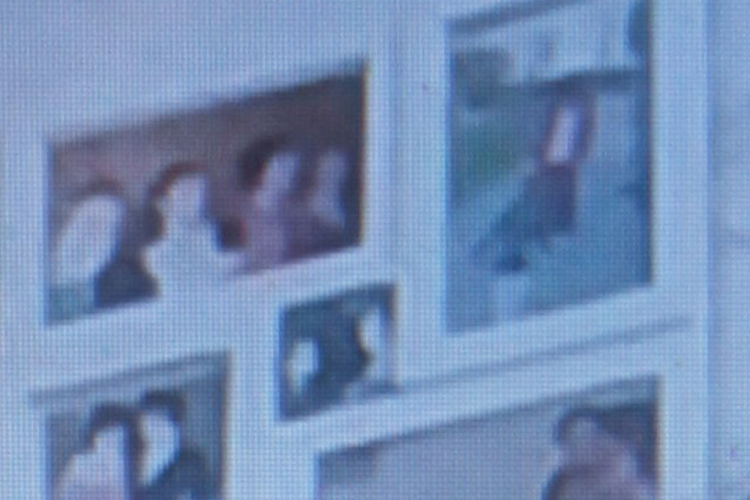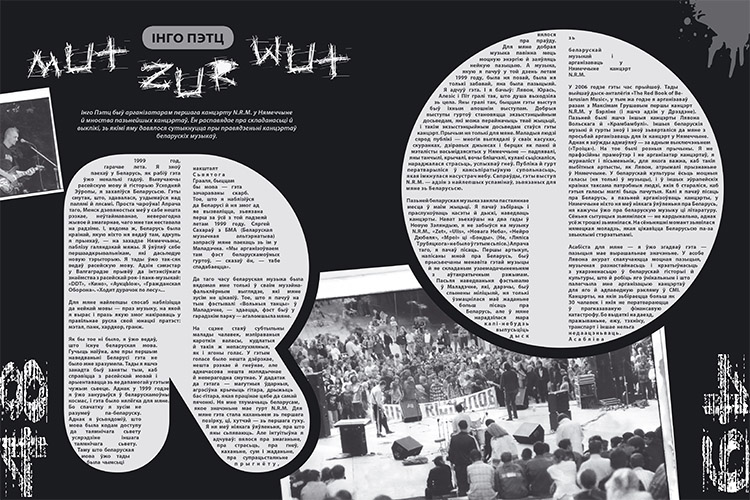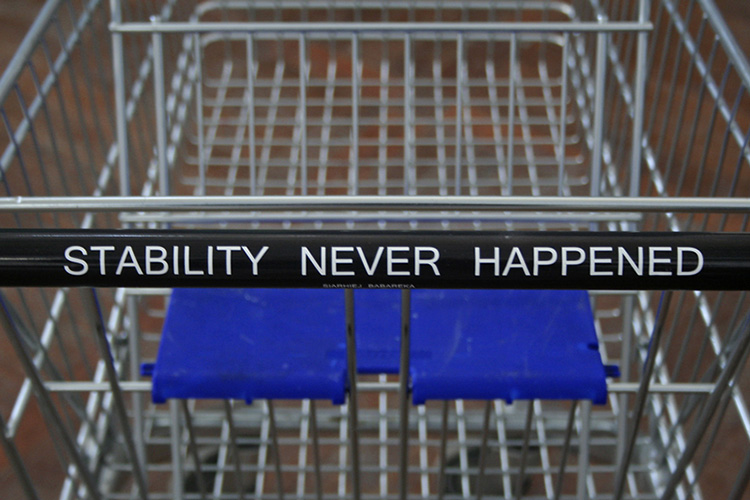
Аўтар: Tania Arcimović, 05/01/2016 | ART interview
ISOLYATSIA: ART AGAINST ARMS
pARTisan #29’2015
Foundation «IZOLYATSIA. Platform for Cultural Initiatives» was created in 2010 in Donetsk in the territory a former insulation materials factory and very soon its activities became known not only across Ukraine, but also abroad. On June, 9, 2014, the militia of the self-proclaimed Donetsk People’s Republic seized the factory and deprived the Foundation not only of space, but also of archives, libraries, collections and equipment that could be saved only partially. Nevertheless the Foundation team led by its founder Lubov Mikhailova did not show a bold front and in January 2015 held their first exhibition in Kiev inside a shipyard building. Thus, a new period of IZOLYATSIA began. By the way, the exposition included collages made by the Belarusian art group «Revision» (Maksim Wakultschik, Zhanna Grak, Andrei Dureika, Andrei Loginov, Maksim Tyminko who at the moment live and work abroad).
ANNA MEDVEDEVA, the Director of Communications. speaks about the history of the Foundation, its concept and activities, as well as about new formats, which appeared due to the «new» situation in both Ukraine and the world.
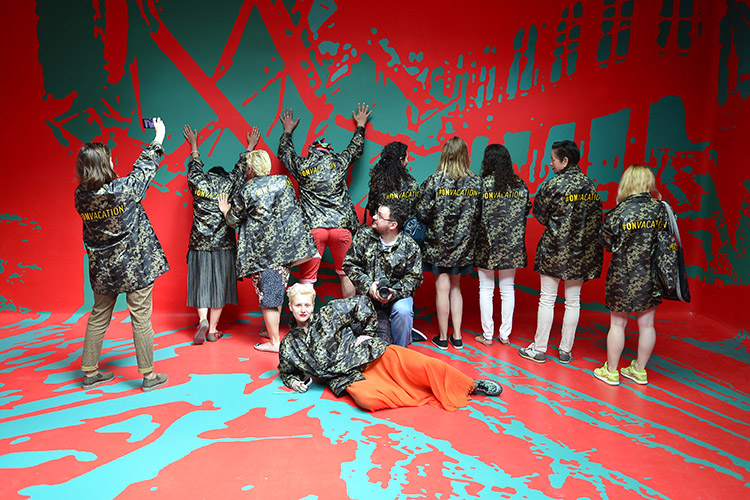
#ONVACATION project. Russia pavilion during Venice Biennale 2015. Photo Dmitry Sergeev
Anna Medvedeva: The emergence of IZOLYATSIA in 2010 in Donetsk was a specific challenge to that cultural and social situation, which was observed at that time in the city. I would describe the atmosphere of what was happening as «apocalypse», a kind of a vicious circle without any hope for the future. And our appearance there, especially in such an unusual place — in the territory of the insulation materials factory caused a lot of debate, misunderstanding, rejection, but in any case those were living processes, which our city lacked. The Foundation’s names in an interesting way overlapped: on the one hand, it was the name of the factory where we settled down, on the other hand, we were really in «isolation» — culturally and socially —
and thus we decided that already through our name we would fight back and try to get out of the cordon we happened to find ourselves.
The Foundation was established by Lubov Mikhailova, who was born in Donetsk, left it many years ago and then returned in the 2000s. She has always been fond of art, and when she returned to Donetsk, she thought that culture and art would help to stir up the city and bring it out of isolation. The territory of the factory is a huge industrial area, not the suburbs, but a fairly remote area without any developed infrastructure, and the fact that we were on the periphery — of Ukraine and the city — also shaped us. And, in principle, we continue to support the idea of decentralization and culture development in more peripheral areas. In the course of several years of our functioning, we cleaned up the factory territory of 7,5 hectares and filled it up with new meanings and new energy. There was a slagheap in that place, where we wanted to make a landscaped park, all the industrial premises were used either as exhibition halls or as workshops, where art was being produced, and later we were planning to make residences in the territories of the factory, but, unfortunately, we could not make it.
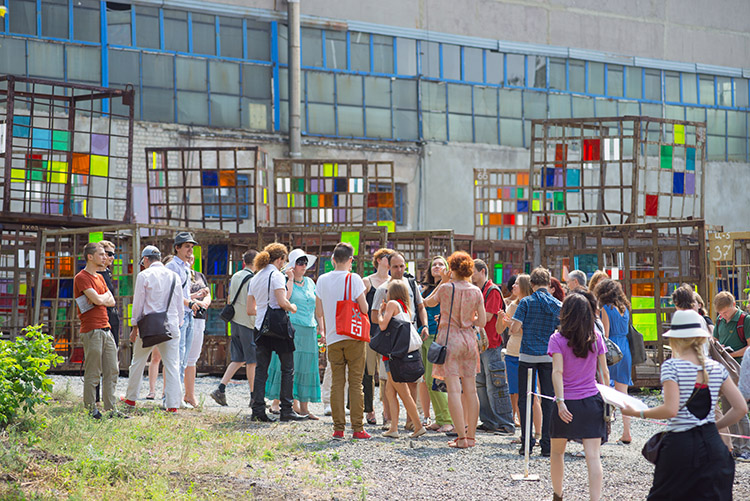
Daniel Buren. 21 doors = 21 colour. Works «in situ». March, 2012, Donetsk. IZOLYATSIA project. Photo Ruslan Semichev
— And what was the welcome you received from the city? I mean both the official side and the citizens.
A. М.: First the city did not notice us at all, the press was writing about us, but not always the information was correct. Then misunderstanding arose, there were a few questions, but no rejection, and gradually due to the fact that the interest in us was growing thanks to our diverse program that targeted not only a narrow art community, but also a wider public, more and more people began to attend us, and at some point the Foundation even became a fashionable place.
As for the mayor’s office, they did not pose any obstacles, unlikely realizing on the whole what exactly we were doing, but neither did they make advances even in those situations that might bring them profit. For example, the distance between the city center and the factory is 4 km, not such a long way, but still it was difficult to get there: there are not so many people who live in this area, so the public transport connection is not so good. There was only one bus that could reach the place and soon it could no longer cope with the number of people willing to get to the Foundation. We could have purchased a bus, could have found sponsors, but we thought that it had to be done by the city: we were increasing the tourist attraction of the city, journalists who wrote about Donetsk came to visit us, because of IZOLYATSIA, because of the tourists. But the city did not care — the bus route was not changed, the buses did not start running more often. And finally a funny thing happened, when the territory of factory was seized and we wrote a letter to the mayor, who was still representing the Ukrainian authorities.
But no-one answered it, then we called his office, and the mayor was surprised, he said that he had no idea about our existence, so how anyone could have seized us, if we never actually existed.
— Before moving to the turning point of your existence — the seizure of the IZOLYATSIA territories and your «exile», will you, please, tell us about the main activities of the Foundation? About some key projects?
A. М.: The Foundation has three main directions of activities — art projects depicting the specifics of the local context, educational programs and the development of creative industries. Among the art projects I would mention the residences. We had a group of artists from Ukraine and abroad, who were interested in coming to Donetsk, they used to arrive there, discover the city, immerse into the context and interact with people who were coming to the lectures and helping to create pieces of art, and each time it lasted for several months. The format of the residence also has an example of creating an uncomfortable situation. Certainly each of the artists came with his/her own system of values, experience and worldview, whereas in Donetsk its own system already existed, which was fairly homogeneous, and there was a crazy exchange of knowledge and emotions. It often led to situations and strong emotional experiences and made our visitors do some extra reading, go further looking for answers to the questions, deal with self-education.
It should be noted that IZOLYATSIA does not import «ready-made» projects and artists, together we adapt all that we are offered to the context — Donetsk and Ukraine.
One of the first projects was connected with miners, who in recent years have ceased to be representatives of a respected profession and people who earn a lot. That is all that was in the Soviet Union and what Donbass was known for and why people used to come here has lost its topicality. There was only a formal Miner’s Day left — an occasion when people recalled of them but it was more like a farce, because the next day miners were forgotten again. We decided to make an alternative project dedicated to miners. And there was some resistance on their part — to work with us to do something unusual, but interesting. The idea of the project Cai Guo-Qiang: 1,040 meters below ground was in inviting a group of artists from Donetsk to enter two mines — a coal and a salt ones — to make portrait sketches of the miners. The drawings were then put onto large canvases. In this project IZOLYATSIA worked with a Chinese artist Cai Guo-Qiang, who used gunpowder explosions to create paintings based on the original drawings. Within a month, the IZOLYATSIA team, about a hundred volunteers and the Foundation visitors were communicating with the miners, and thus the latter developed an understanding of being valued, being important and not just coming on a holiday, but being active participants of the process, that there was something that depended on them.
Within the project Where is the Time? (2012) the artist Pascale Marthine Tayou made a piece of art dedicated to the women of Donbass — Make up! It was a lipstick, which not so long ago, in June 2015, was blown up by those who invaded the territory of the Foundation in Donetsk. And it is also an example of interaction between the artist and the environment. In the winter of 2011 a group of artists arrived to IZOLYATSIA. One of the group members, Pascale Marthine Tayou, after discovering that in the city there was not a single monument to the women who had raised the entire economy of Donbass on their own and had restored the industry after the World War II, he decided to dedicate them his new piece of art. His work represented a giant red lipstick that crowned a stack-furnace. In that industrial area, where we were located, that stack-furnace could be seen very well and raised questions in people, they got interested in going back and in learning about their own history, and we believe it to be a great achievement. And the fact that the story was continued — the piece of art not so long ago was blown up by people, who had occupied our territory, also shows us that it has new meanings. Since the people who blew up the stack-furnace seemed to support the values of that world, where tribute is paid to the heroism of the Soviet people during and after the World War II. But through their acts, and even rather simply out of ignorance, they created a new situation, where the piece of art continues to live without those meanings that the artist had encoded into it.
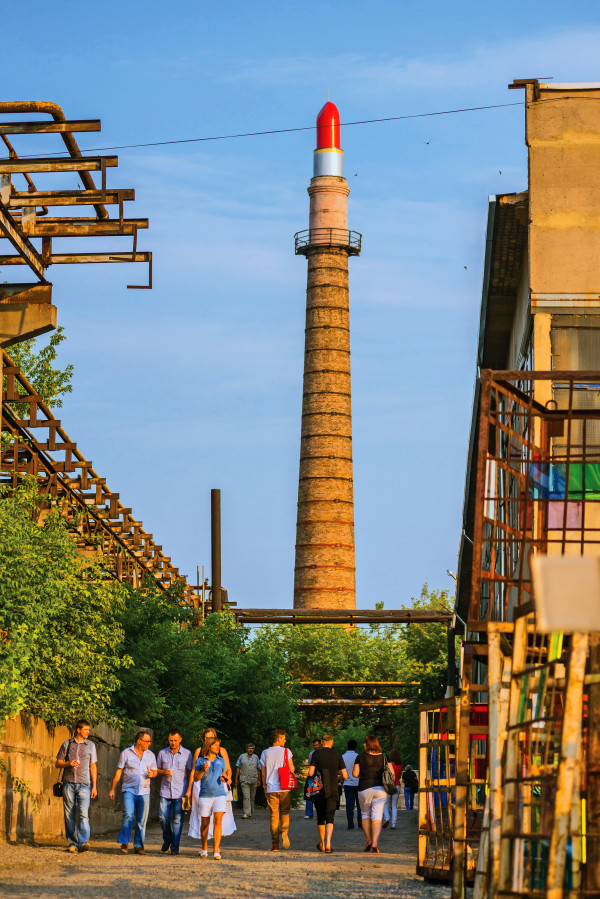
Pascale Marthine Tayou. Make up! Donetsk, 2012. IZOLYATSIA project. Photo Dmitry Sergeev
Within the same project — Where is the Time? — works which became an integral part of the territory were created. We could not take them away, even if the factory invaders allowed us to do it. Those were large-scale objects and installations made by Daniel Buren (France), Leandro Erlich (Argentina), Kader Attia (France), Lubov Malikova, Zhanna Kadyrova, APL315, (Ukraine) and other artists. Many of these art objects located on the territory of the Foundation in Donetsk were taken by the invaders for scrap or used for the construction of city checkpoints.
We have been working a lot with the community. In the course of 4 years our audience grew from 10 people to 3 000 thousand. And everything was optimistic in terms of communication with people, there was progress in the interest they had in us, in culture and self-development, until the war came and our territory was seized. It happened immediately after the seizure of the administrative buildings. Ideologically, our paths did not go the same way, and the separatists could not tolerate on their territories people who were supporting freedom of creative expression, artistic self-expression and tolerance. Moreover, the factory infrastructure, put in order, could be well adapted to the needs of members of the so-called «Donetsk People’s Republic» and is still used as a military base, a prison, a warehouse of stolen cars and even place where sentences are enforced. We moved to Kiev, a new period began, but our mission has not changed: it is the preservation and development of industrial culture and the creation of something new.
The Foundation IZOLYATSIA views culture as an instrument for change: social, economic, political, etc. Because we are the opponents of the stability and stagnation that used to be characteristic to Donetsk and Donbass for long and served as one of the causes of the situation that occurred.
— Аnd how did you learn that the territory did not belong to you anymore? What morning or evening was it?
A. М.: In late April, 2014 we were holding the Ukrainian Literary Festival in IZOLYATSIA, on the topic «Language and Violence.» At that time there were already battles in Slavyansk, and it was clear that it was only the beginning. We had planned several fairs, but they were canceled due to the close military actions. It was not yet the Antiterrorist Operation, but it was not safe already. And almost the entire team of the Foundation IZOLYATSIA moved to Kiev to meet other team members. On June, 8 there was Trinity Sunday, and June 9, Monday, was a day off. I was already in Kiev then and went to the hostel to meet my colleagues, and they were confused telling me that the territory of the factory was seized. I got shocked. And we learned about it from our guards, who called us and said that some people had come to them holding papers and accompanied by the armed separatists, they had been shown an order according to which the territories of the insulation materials factory had to be assigned to the needs of the Donetsk People’s Republic and humanitarian aid from Russia had to be allocated there. We managed to take away the servers, archives, almost all the documentation, a part of the laboratory of digital production and one-third of the collection. We had no time to carry away the rest: at some point, the invaders said «stop!» and the doors were closed. Since then nothing has changed.
— But it did not break you, on the contrary becoming a new challenge that had to be overcome, did it? After all, it is clear that you have invested much time and energy in it, however, you did not lose heart.
A. М.: We could overcome it, first of all because we are a good team led by Lubov Mikhailova. She is an amazingly cheerful person and a passionary who is never in despair. After we managed to take away something, it was decided to open IZOLYATSIA in Kiev, and the negotiations with the local authorities started, we asked them to provide us with premises where we could continue our work. We talked to the Ministry of Culture and other institutions asking them to give us some space. In fact, it was a performance per se: we had to go all the way — try to get from the state premises for free, but we did not really believe in it so much ourselves. It ended up that using our own funds we rented a building located in the territory of the functioning shipyard. It is not comparable with the scale of our premises in Donetsk, but it also carries the energy of industry. In addition, it has a picturesque view on a Dnieper bank. It finally became clear that we would not get back to Donetsk yet, and we started to adapt to the situation, in which we were finding ourselves then.
As I said, our work has not changed, but new themes and ideas, including topics related to the war, appeared. We also wondered what we could do as a cultural institution then, about the role of the culture in the times of conflict, what art could do art against arms.
After having moved to Kiev, we were nevertheless aware that the Foundation was not a Kiev institution, it was still a Donetsk one — simply it was in exile, or rather existing in a nomadic mode, without a reference to any specific location. Thus, a series of educational and artistic projects in the East of Ukraine in the Antiterrorist Operation zone («Change») appeared, IZOLYATSIA has opened its office in Mariupol, in a front-line city, near which every day there was a fight.
One more project of ours is «Culture and Conflict: ISOLATION in Exile». It was an informational exhibition, which revealed personal stories of different parties involved in the conflict — the invaders of territories, journalists and artists arrested by the Donetsk People’s Republic for an ideologically incorrect behavior, and young people of Donetsk who see their city as a part Ukraine. This is our attempt to present the situation in Ukraine from different perspectives. The project is implemented exclusively abroad, because in Ukraine there is a more or less clear understanding of what is happening, but in the countries such as Germany or the Czech Republic it seemed important for us to have this project implemented.
We organized a residence called «The Architecture of Ukraine» in Mariupol and Kiev. We ascribe much to the word «architecture»: it is everything that surrounds a person and forces him/her to think about their identification — aesthetic, national, regional, ideological. As part of this residence we invited experts from different areas: urbanism, architecture and sociology. They arrived to Mapriupol, which was already partly destroyed, the city which had survived the occupation and where it was necessary to work on new meanings. As a result, the exhibition of projects appeared in which the participants shared their vision of the architectural and artistic future of the city, and in a year we want to bring some of these ideas to life.
— It is your first time in Minsk, you have met many of our cultural actors. What are your impressions? In which way are Belarus and its cultural scene seen from the outside?
A. М.: In 2012 I was engaged in distant monitoring of the process of respecting the freedom of peaceful assembly in Belarus, and I developed some kind of understanding of what was happening here. Not in the cultural sphere, though some aspects overlapped. For example, the freedom of peaceful assembly and Michail Hulin action [1] during which he was arrested, and I also realized what the situation was like within the artistic environment. In IZOLYATSIA the Ў Gallery has always been on everyone’s lips, but no one really knew anything. Then we talked a lot with our colleagues at international conferences, where the situations in Russia, Ukraine, Belarus, Georgia were discussed. And we often heard that very little was happening in Belarus. Understanding of the present situation also influenced our interest in Belarus, as well as our curators’ decision to hold the first exhibition in the new space of IZOLYATSIA in Kyiv with invited Belarusian artists — «Revision» group. The exhibition presents a part of our rescued collection. The destruction of pieces of art, re-writing history, the revision of values and archives are the challenges that not only IZOLYATSIA faced, but also many other cultural institutions in the East of Ukraine. The Foundation invited Andrei Dureika who presented an excellent lecture on the Belarusian art and made the whole team fall in love with him. He spoke about his efforts in systematizing the Belarusian art. Then he sent us the information about the exhibition ZBOR. Constructing an Archive in Białystok, the format of which we are very much interested in, I received an invitation from «pARTisan» to visit Minsk and somehow all came together.
I am here and in terms of the artistic life all is much better than I was thinking. I find the situation of the confrontation between the state institutions and the independent scene interesting, it is also interesting that inside state institutions there are people who are trying to resist the government rigidity. I understand that I saw the most active side, I have an approximate understanding of how things are developing and I have very optimistic expectations of how the Belarusian cultural field is going to develop.
Interviewed by Tania Arcimovič
[1] It means the action by Michail Hulin A Personal Monument in Minsk in 2012 when he together with two volunteers was arrested by Belarusian police, bitten and then got a faked-up indictment according to it the artist and volunteers made a resistance to policemen. The artist brought the action against the policemen and won a case.
Translated by Volha Bubič
Opinions of authors do not always reflect the views of pARTisan. If you note any errors, please contact us right away.



